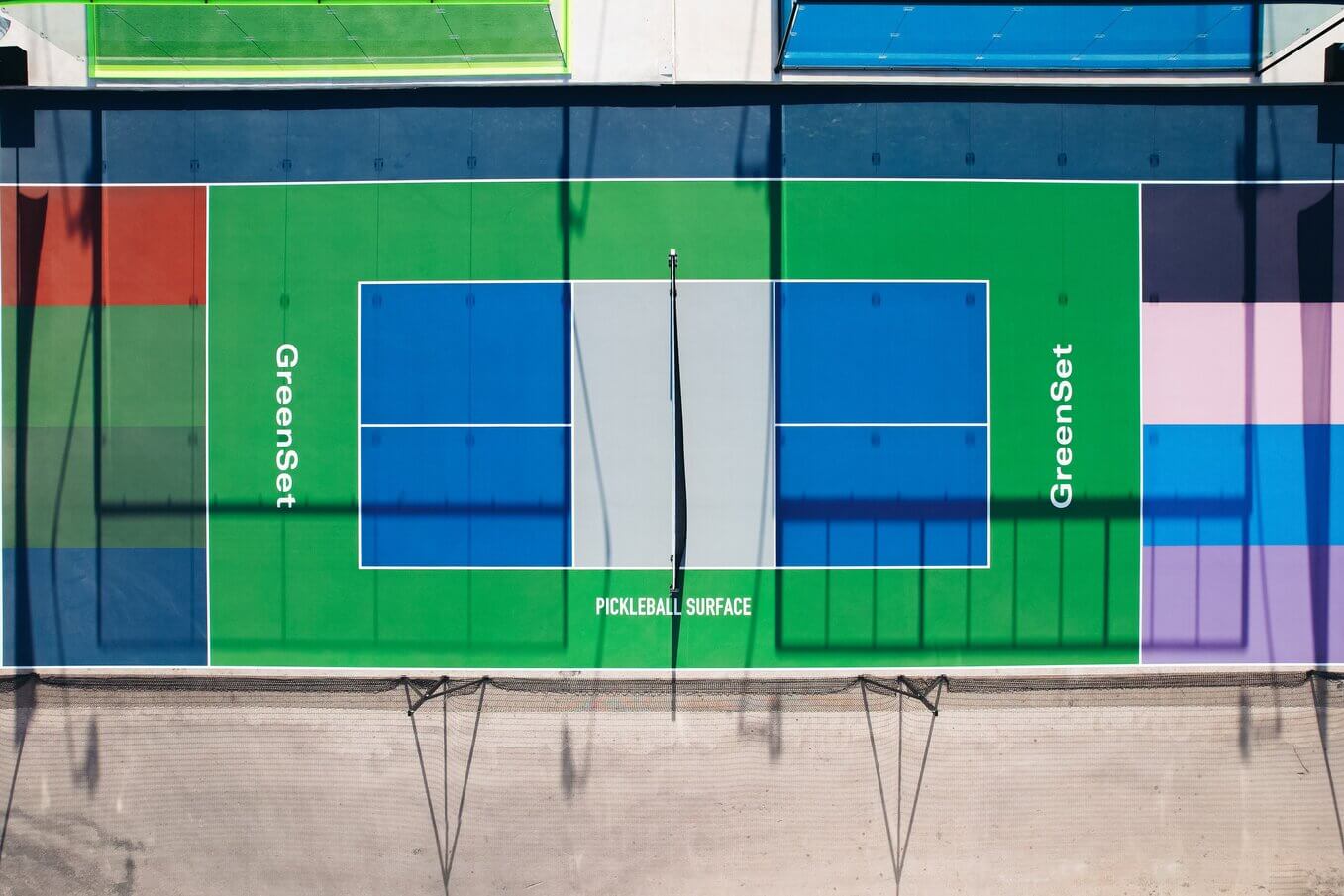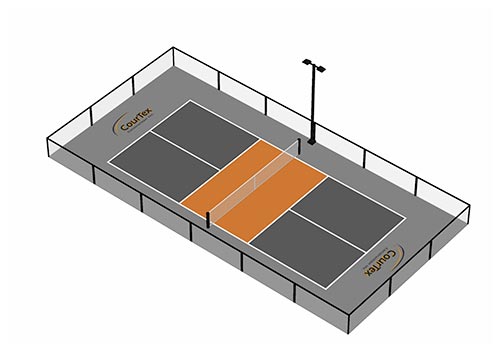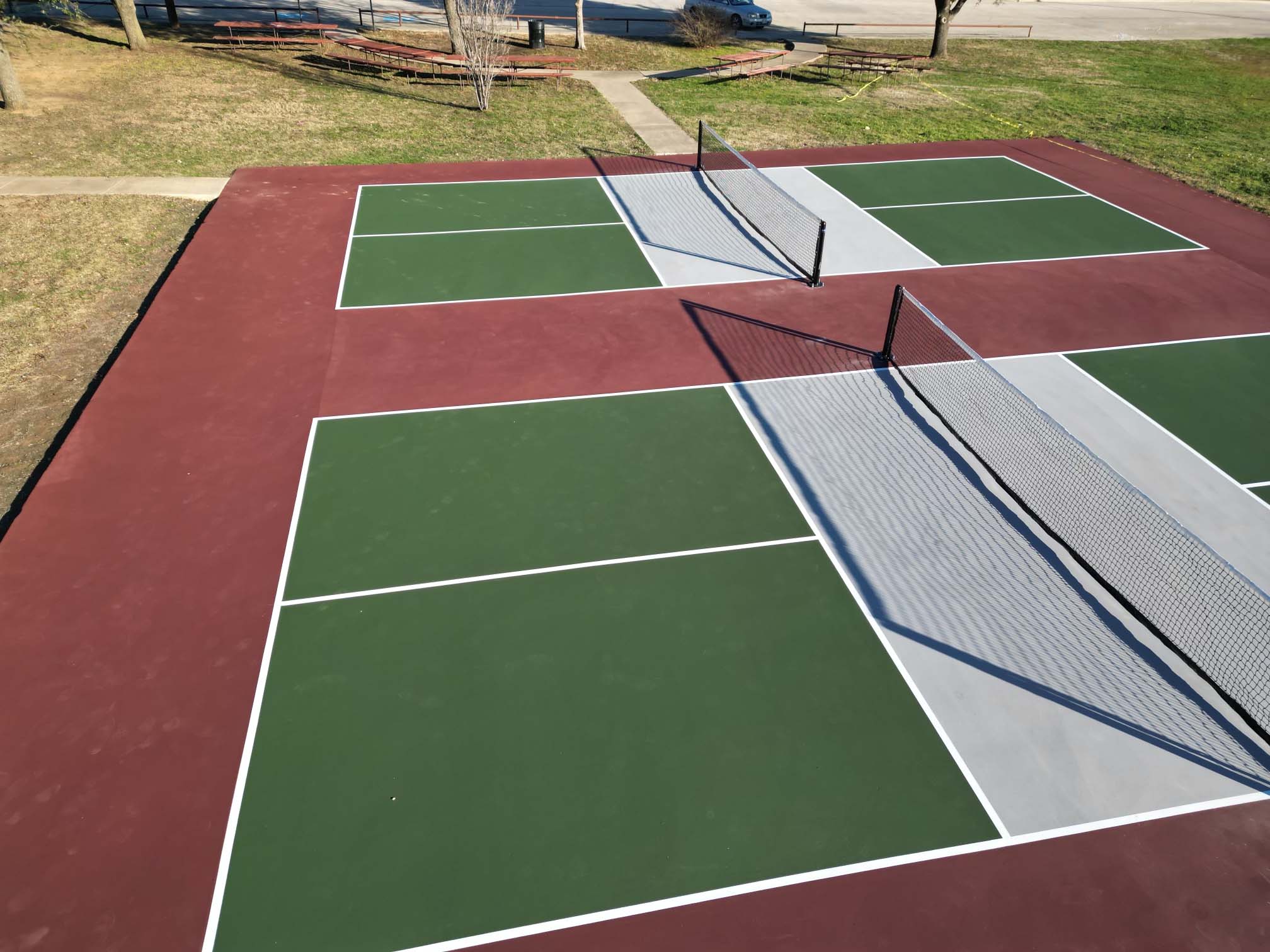Sustainable Practices in Pickleball Court Building You Must Know
As the popularity of pickleball proceeds to climb, so too does the requirement for lasting techniques in court construction. This approach not only addresses environmental worries yet likewise boosts the longevity and capability of the courts. From picking green products to carrying out effective drain and energy-saving lighting services, there are numerous strategies to take into consideration. The impact of these techniques expands much past the court itself. Recognizing exactly how each component contributes to an extra lasting future welcomes further expedition right into the detailed balance between recreational growth and ecological stewardship.
Picking Eco-Friendly Products
Choosing environment-friendly materials is an important action in the building and construction of lasting pickleball courts. The selection of lasting materials not just lessens ecological effect yet also enhances the longevity and performance of the court. Key products include reused rubber for the surface, which uses exceptional longevity and shock absorption while diverting waste from garbage dumps.
In addition, making use of locally sourced materials decreases transportation discharges and supports regional economies. Pickleball court construction. As an example, making use of native hardwoods for fence and seating can give a sustainable visual while guaranteeing resilience against the components.
Including absorptive products for court foundations can even more contribute to sustainability by permitting for natural water drain and minimizing drainage. These selections not just protect regional environments yet also promote healthier play environments.
Efficient Water Drainage Solutions
While the selection of eco-friendly products is necessary, carrying out effective water drainage remedies is equally critical for keeping sustainable pickleball courts. Correct water drainage not just protects the court surface from water damages however likewise decreases erosion and overflow, advertising environmental honesty.
Effective water drainage systems can consist of absorptive paving, which permits water to penetrate the ground instead than pooling on the surface. This minimizes the possibility of standing water, which can bring about mold and mildew and other maintenance problems. Furthermore, integrating strategically placed water drainage networks and swales can direct excess water far from the court area, ensuring a completely dry having fun surface and preventing dirt disintegration.
Utilizing native plants in the landscaping around the courts can additionally boost water drainage by soaking up excess water and decreasing overflow. These plants require less irrigation and promote biodiversity, aligning with lasting techniques.
Furthermore, it is important to frequently keep the drainage system to guarantee its lasting effectiveness. This includes clearing particles and tracking for blockages. By focusing on efficient drain solutions, pickleball court producers can dramatically add to the sustainability and durability of the facility, inevitably benefiting both players and the setting.
Energy-Efficient Illumination Options
As the need for pickleball remains to grow, incorporating energy-efficient lighting choices right into court layout has actually ended up being increasingly crucial for sustainability. Traditional try these out lighting systems commonly take in excessive energy, adding to higher functional prices and environmental effect. Adopting modern, energy-efficient innovations is crucial for both brand-new building and constructions and renovations.
LED (Light Emitting Diode) lighting stands out as a premier choice due to its durability and power financial savings (Pickleball court construction). Compared to traditional lights, LEDs make use of approximately 75% less power and can last up to 25 times much longer, dramatically minimizing maintenance prices. Additionally, the directional nature of LED illumination lessens light contamination, ensuring that illumination is concentrated on the court as opposed to surrounding locations.

Sustainable Surface Area Alternatives
Exploring sustainable surface alternatives for pickleball courts has actually obtained grip among contractors and players alike. The focus on green products not just lines up with the expanding environmental understanding but additionally enhances the efficiency and durability of the courts.
One popular choice is using recycled rubber, which can be sourced from used tires. This material offers outstanding shock absorption, decreasing the risk of injuries for gamers while advertising sustainability. Furthermore, modular tiles made from recycled plastics supply an additional viable option. These floor tiles are easy to mount and change, and their adaptability allows for various court arrangements.
Natural lawn courts are also becoming a lasting option, promoting biodiversity and lowering the warm island effect. They need regular maintenance and water, their website which may not straighten with all sustainability objectives.

Water Preservation Strategies

One more effective technique entails the setup of rain harvesting systems. These systems collect and store rainwater for usage in preserving court surface areas and landscape design. This strategy not just saves drinkable water however likewise reduces reliance on local resources.
Moreover, employing drought-resistant landscaping around the courts is necessary. Indigenous plants call for much less water and are much better adjusted to local climate problems, hence reducing overall water usage. Additionally, using effective irrigation systems, such as drip irrigation, guarantees that water is provided directly to plant roots, decreasing evaporation and waste.
Conclusion
Including sustainable methods in pickleball court construction significantly adds to ecological conservation and source efficiency. Utilizing environmentally friendly materials, implementing reliable drainage solutions, and embracing energy-efficient illumination options can considerably decrease eco-friendly impact. Moreover, discovering lasting surface area alternatives and using water preservation techniques boost the total sustainability of these recreational facilities - Pickleball court construction. By focusing on these techniques, the building of pickleball courts can align with wider environmental objectives while promoting longevity and capability within neighborhoods.
As the appeal of pickleball continues to increase, so as well does the requirement for sustainable practices browse around this site in court construction.Choosing environmentally friendly materials is an essential step in the construction of sustainable pickleball courts. By focusing on energy-efficient lights alternatives, pickleball court erectors can add to a more lasting future while satisfying the needs of stakeholders and gamers alike.Integrating sustainable surface area options not only enhances the efficiency of pickleball courts however also leads the way for applying reliable water conservation techniques.Including sustainable techniques in pickleball court building dramatically contributes to ecological preservation and resource efficiency.